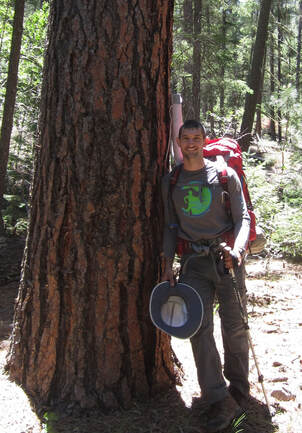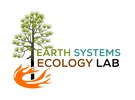Kevin Willson

I am in the final stages of earning my PhD, during which I have studied the effects of fire on ponderosa pine ecosystems across the Gila National Forest, NM. Specifically, I quantified conifer regeneration patterns after high-severity fire and tree physiological response to recurrent low-severity wildfire and multi-year drought events using an assortment of statistical, GIS, coding, dendrochronological, and stable isotope tools. After graduating, I look forward to further cultivating these and other spatiotemporal tools to study the interactive effects of increasingly frequent fire and drought events on dry conifer forests across the western US. Before joining the Earth Systems Ecology Lab, I received my Master’s degree from the University of Alabama’s Forest Dynamics Lab by assessing the temporal patterns of ground flora growth following prescribed fire and Bachelor degrees from the University of Maryland in ecology and environmental sciences.
Google Scholar
Researhgate
Publications:
Willson, K.G., Hart, J.L., Zengel, B. A longing for the natural past: Unexplored benefits and impacts of a nostalgic approach towards restoration in ecology. Restoration Ecology, In Press. https://doi.org/10.1111/rec.12985
Willson, K.G., L.E. Cox, J.L. Hart, D.C. Dey. Three-dimensional light structure of an upland Quercus stand post-tornado disturbance. Journal of Forestry Research, In Press.
https://doi.org/10.1007/s11676-019-00907-y
Barefoot, C.R., Willson, K.G., Hart, J.L., Schweitzer, C.J., Dey, D.C., 2019. Effects of thinning and prescribed fire frequency on ground flora in mixed Pinus-hardwood stands. Forest Ecology and Management, 432, 729-740. https://doi.org/10.1016/j.foreco.2018.09.055
Willson, K.G., C.R. Barefoot, J.L. Hart, C.J. Schweitzer, D.C. Dey., 2018 Temporal patterns of ground flora response to fire in thinned Pinus-Quercus stands. Canadian Journal of Forest Research, 48, 1171-1183. https://doi.org/10.1139/cjfr-2018-0132
Willson, K.G., Perantoni, A.N., Berry, Z.C., et al., 2017. Influences of reduced iron and magnesium on growth and photosynthetic performance of Phragmites australis subsp. americanus (North American common reed). Aquatic Botany, 137, 30-38. https://doi.org/10.1016/j.aquabot.2016.11.005
Google Scholar
Researhgate
Publications:
Willson, K.G., Hart, J.L., Zengel, B. A longing for the natural past: Unexplored benefits and impacts of a nostalgic approach towards restoration in ecology. Restoration Ecology, In Press. https://doi.org/10.1111/rec.12985
Willson, K.G., L.E. Cox, J.L. Hart, D.C. Dey. Three-dimensional light structure of an upland Quercus stand post-tornado disturbance. Journal of Forestry Research, In Press.
https://doi.org/10.1007/s11676-019-00907-y
Barefoot, C.R., Willson, K.G., Hart, J.L., Schweitzer, C.J., Dey, D.C., 2019. Effects of thinning and prescribed fire frequency on ground flora in mixed Pinus-hardwood stands. Forest Ecology and Management, 432, 729-740. https://doi.org/10.1016/j.foreco.2018.09.055
Willson, K.G., C.R. Barefoot, J.L. Hart, C.J. Schweitzer, D.C. Dey., 2018 Temporal patterns of ground flora response to fire in thinned Pinus-Quercus stands. Canadian Journal of Forest Research, 48, 1171-1183. https://doi.org/10.1139/cjfr-2018-0132
Willson, K.G., Perantoni, A.N., Berry, Z.C., et al., 2017. Influences of reduced iron and magnesium on growth and photosynthetic performance of Phragmites australis subsp. americanus (North American common reed). Aquatic Botany, 137, 30-38. https://doi.org/10.1016/j.aquabot.2016.11.005
